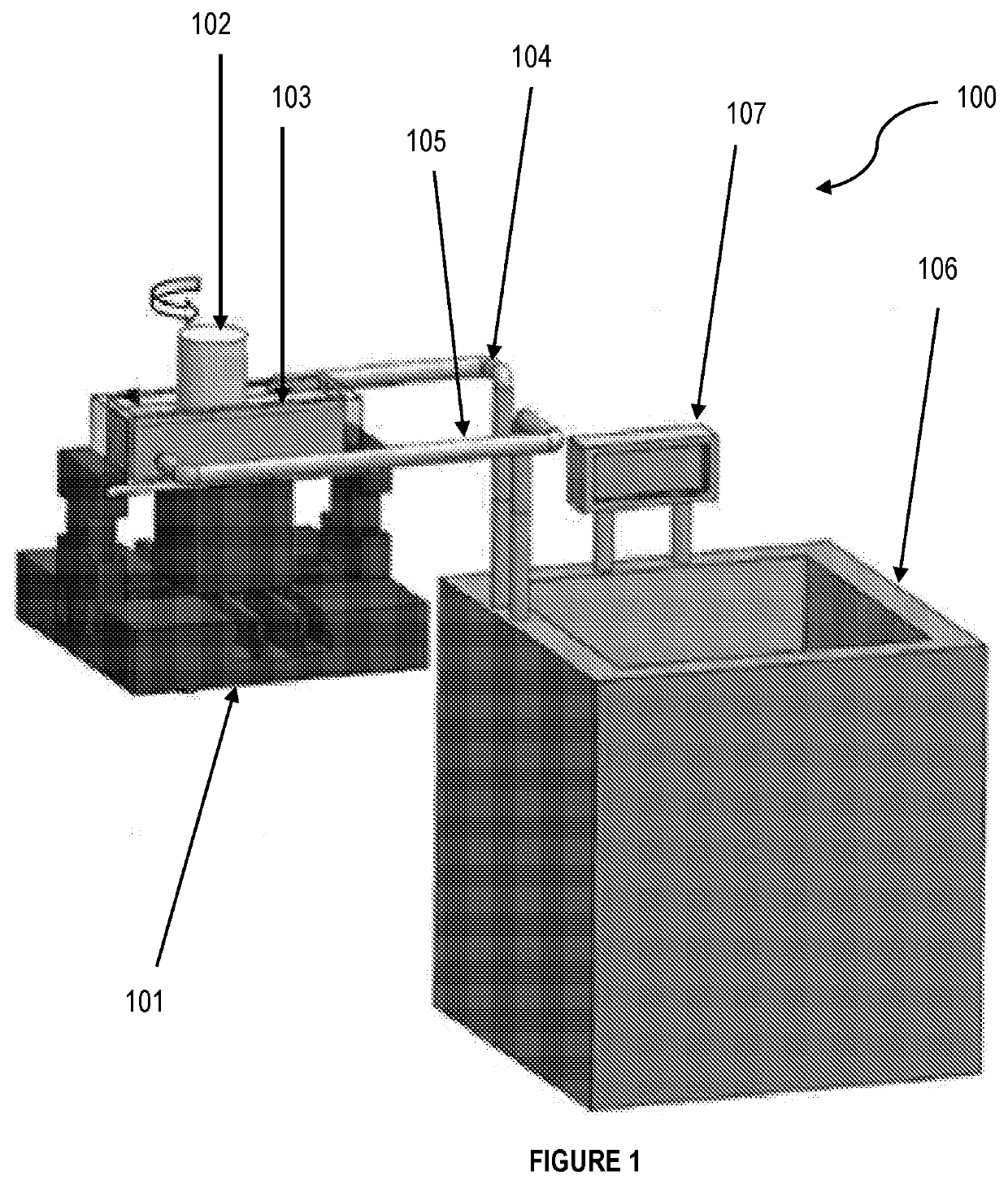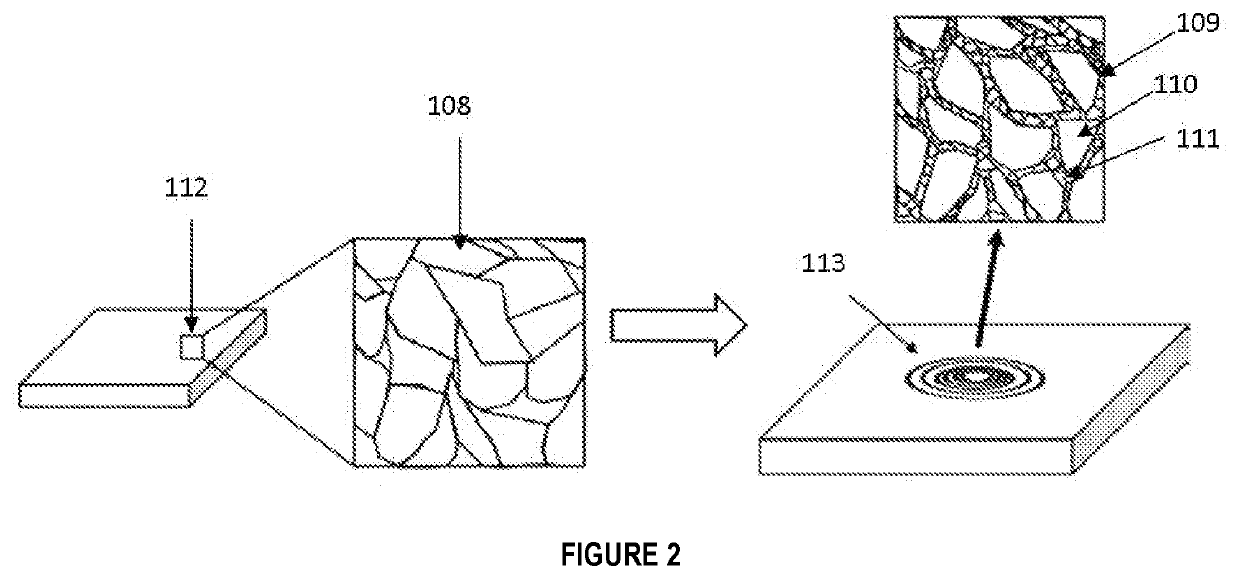A method for modifying surface grain structure of the material and apparatus thereof
a surface grain structure and material technology, applied in non-electric welding apparatus, welding apparatus, manufacturing tools, etc., can solve the problems of mechanical and thermal stresses created by the material, the failure of the structural assembly, and the time-consuming and laborious maintenance, repair and replacement of the structural member over the life of the assembly, etc., to achieve good formability, high strength, and cost-effective
- Summary
- Abstract
- Description
- Claims
- Application Information
AI Technical Summary
Benefits of technology
Problems solved by technology
Method used
Image
Examples
example 1
[0043]In an exemplary embodiment, the working material selected is stainless steel material (112). Said working material of required dimension and thickness of more than 0.6 mm having coarse grain structure (108), is fastened on the work station (101) by fastening means. The cooling medium used is a mixture of distilled water and ethanol in equal proportion. Said cooling medium is conducted from the cooling unit (106) to the said chamber (103) through the said means for inlet (104). The temperature of the cooling medium is −30 degree Celsius. The pre-defined temperature of the cooling medium in the chamber is set to be −30 degree Celsius. The cooling medium circulates from / to the chamber (103) to / from the cooling unit (106) through the said means for outlet (105) and the said means for inlet (104), to maintain the pre-defined temperature of the chamber. The pre-defined rotational speed of the probing pin is set as 1800 rpm. Said probing pin a non-deformable tool is made of tungsten ...
example 2
[0044]In an another exemplary embodiment, the working material selected is a stainless steel material. Said material of required dimension and thickness of more than 0.6 mm, is fastened on the work station (101) by the said fastening means. The cooling medium is a mixture of distilled water and ethanol in equal proportion. Said cooling medium is conducted from the cooling unit (106) to the chamber (103) through the said means for inlet (104). The temperature of the cooling medium is −30 degree Celsius. The pre-defined temperature of the cooling medium in the chamber (103) is set to be −30 degree Celsius. The cooling medium circulates from / to the chamber (103) to / from the cooling unit (106) through the means for outlet (105) and the means for inlet (104), to maintain the pre-defined temperature of the cooling medium in the chamber (103). The pre-defined rotational speed of the probing pin is 1800 rpm. Said probing pin a non-deformable tool is made of tungsten carbide material. Wherei...
PUM
| Property | Measurement | Unit |
|---|---|---|
| thickness | aaaaa | aaaaa |
| depth | aaaaa | aaaaa |
| surface grain structure | aaaaa | aaaaa |
Abstract
Description
Claims
Application Information
 Login to View More
Login to View More - R&D
- Intellectual Property
- Life Sciences
- Materials
- Tech Scout
- Unparalleled Data Quality
- Higher Quality Content
- 60% Fewer Hallucinations
Browse by: Latest US Patents, China's latest patents, Technical Efficacy Thesaurus, Application Domain, Technology Topic, Popular Technical Reports.
© 2025 PatSnap. All rights reserved.Legal|Privacy policy|Modern Slavery Act Transparency Statement|Sitemap|About US| Contact US: help@patsnap.com


